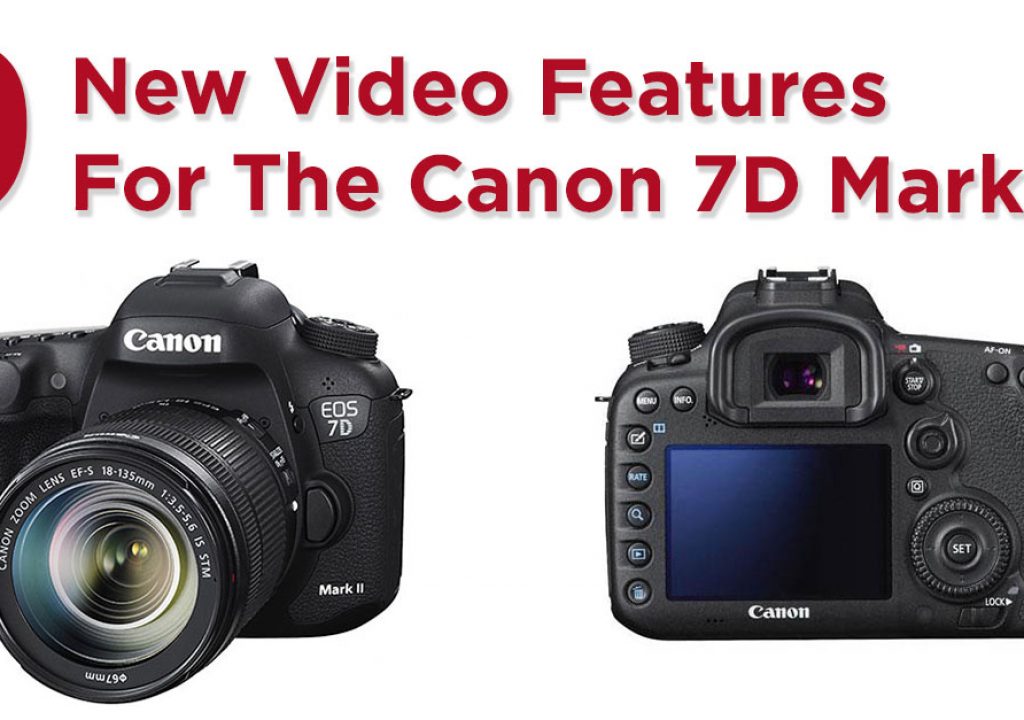
The original EOS 7D was launched in September 2009, a lifetime ago with the pace of change in this industry. That camera’s lifespan was considerably lengthened by a major 2.0 firmware update in August 2012, so it’s only now that we are finally seeing the 7D Mark II, just announced at Photokina 2014.
We are primarily interested in shooting video on this website so I’ll skip over any in-depth discussion of the photographic functions and simply lay out several key improvements for video shooting.
1. 8-bit 4:2:2 output from the HDMI port
All Canon’s previous DSLR’s that were able to output a clean HDMI signal, did it with a 4:2:0 signal. Whilst the 7D Mk II is still recording a 4:2:0 VBR signal internally, we can now get 4:2:2 from the HDMI. You can record simultaneously to the internal card as well.
2. Audio over HDMI
For the first time, the HDMI output also features audio channels so there’s no need to run separate cables to your recorder or sync an audio track later.
3. The camera ships with an HDMI port protector
We all love to hate HDMI as a connection. They are easy to break and expensive to fix if you break the port in the camera. The fact is though that any other type of connection would be hugely impractical on a consumer camera so we’re stuck with it. A huge number of third party port protection devices have sprung up over the years, but now Canon are including one in the box with the 7D MkII. Nice.
4. Mp4 Recording
This is the first time that a Canon DSLR has included an MP4 recording mode. More options is always nice.
5. 1080p 60. Finally.
A Canon DSLR finally catches up with everyone else and gets full 1080p 50 & 60fps.
6. Dual Pixel CMOS AF for continuous focus
Ok so this is a feature that was first introduced with the 70D but there’s sure to be some improvements to it since last year. Back then I wrote a pretty detailed article on how it worked and since then it’s been adopted into the Canon C100 and C300 as well. It works very well, far better than any other continuous focus system that I’ve ever seen on a CMOS camera.
7. Variable focus speed during video
To go along with the Dual Pixel AF system, the Canon 7D MkII gets some dedicated functionality to control the speed and sensitivity of this system. Menu options allow you to control the tracking sensitivity just as you can in the photo AF section. This will help to prevent the camera from jumping to a different focus point if something quickly flashes through your frame. It also includes options to set different speeds for “Before shooting” and “During shooting” which is a nice touch.
8. New Compression: IPB-Lite
The 7D MkII also introduces a new IPB-Lite compression mode for the first time. As with the 5D MKIII we get ALL-I and IPB as well. IPB-Lite is even more compressed than IPB.
9. Hugely improved build and weather sealing
Since this isn’t a photo specific feature I definitely wanted to touch on this. There’s nothing I hate more than having to baby my equipment because it takes my mind of the job in hand. When the 7D was launched, Canon claimed weather sealing “equivalent to that of an EOS 1-N”. I used the 7D a lot in snowy environments and it was certainly pretty robust. Now though, with the 7D MkII, Canon say this this camera is four times more weather resistant than the original 7D. Of course it also features a solid magnesium alloy body as well like the 5D series and the 1-Series cameras. In other words, this is camera you can really put through the ringer without having to worry much about it.
9.5. Headphone Jack
I’ll sneak this half one in at the end, not because it’s a new feature for Canon DSLRs but simply because it’s an important feature that was missing from the original 7D.
Is Canon doing enough with this camera?
There’s going to be some people that belittle this camera instantly for the lack of 4K recording that we’ve seen from the Panasonic GH-4 and Sony A7-S. Even a new Samsung camera, the NX-1, shoots 4k to the new H.265 codec! Despite all this though, I think there’s still a solid market for the 7D MKII, particularly for web-based productions. I know many people who still use the 7D for this kind of work and the improvements that I’ve outlined here will all be welcome ones in a camera that will work with their existing EF lens collection.

